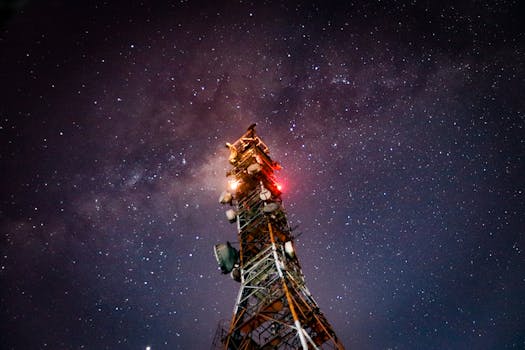
LEO satellites, or Low Earth Orbit satellites, are a type of satellite that orbits the Earth at an altitude of around 160 to 2,000 kilometers. This relatively low orbit allows LEO satellites to provide faster and more reliable connections than traditional satellites, which orbit at much higher altitudes. LEO satellites are revolutionizing the way we communicate and access information, and are expected to play a major role in the development of global connectivity in the coming years.
One of the main advantages of LEO satellites is their ability to provide low-latency connections. Because they are closer to the Earth, signals transmitted to and from LEO satellites have to travel much shorter distances than those transmitted to and from traditional satellites. This means that LEO satellites can provide connections with latency as low as 20-30 milliseconds, which is comparable to fiber-optic connections. In contrast, traditional satellites can have latency of up to 600 milliseconds or more, which can make them unsuitable for applications that require real-time communication, such as video conferencing or online gaming.
Another advantage of LEO satellites is their ability to provide global coverage. Because they are in a low orbit, LEO satellites can be launched in large constellations, with many satellites working together to provide coverage of the entire Earth. This makes them ideal for applications such as remote sensing, where a large number of satellites are needed to provide high-resolution images of the Earth’s surface. LEO satellites are also being used for communication applications, such as providing internet access to remote or underserved communities.
LEO satellites are also being used for a variety of other applications, including navigation, weather forecasting, and Earth observation. For example, the European Space Agency’s Galileo constellation of LEO satellites provides navigation services to users around the world, while the US National Oceanic and Atmospheric Administration’s (NOAA) LEO satellites are used to monitor weather patterns and track storms. LEO satellites are also being used for Earth observation, with applications such as monitoring deforestation, tracking ocean currents, and detecting natural disasters.
Despite the many advantages of LEO satellites, there are also some challenges associated with their development and deployment. One of the main challenges is the high cost of launching large constellations of LEO satellites. Because each satellite must be launched separately, the cost of launching a constellation of hundreds or even thousands of satellites can be very high. Additionally, there are concerns about the environmental impact of LEO satellites, as the large number of satellites in low orbit can contribute to space debris and increase the risk of collisions.
Several companies are currently working on the development of LEO satellite constellations, including SpaceX, OneWeb, and Amazon’s Kuiper Systems. These companies are using a variety of technologies, including advanced propulsion systems and small satellite designs, to reduce the cost and increase the efficiency of LEO satellite launches. For example, SpaceX’s Starlink constellation is using a reusable rocket to launch large numbers of small satellites into low orbit, while OneWeb is using a custom-designed launch vehicle to deploy its constellation of LEO satellites.
LEO satellites are also being used for military applications, such as communications, navigation, and surveillance. The US Department of Defense is currently developing a LEO satellite constellation called the Space Based Infrared System (SBIRS), which will provide early warning of missile launches and other threats. Other countries, such as China and Russia, are also developing their own LEO satellite constellations for military use.
In conclusion, LEO satellites are transforming the way we communicate and access information, and are expected to play a major role in the development of global connectivity in the coming years. With their low-latency connections, global coverage, and ability to provide a wide range of services, LEO satellites are an exciting and rapidly evolving field. As the technology continues to develop and improve, we can expect to see even more innovative applications of LEO satellites in the future.
As the demand for global connectivity continues to grow, LEO satellites are likely to play an increasingly important role in meeting this demand. With their ability to provide low-latency, high-bandwidth connections, LEO satellites are ideal for applications such as video conferencing, online gaming, and cloud computing. Additionally, LEO satellites can provide connectivity to remote or underserved communities, where traditional communication infrastructure may not be available.
Overall, LEO satellites are a rapidly evolving field, with many exciting developments and innovations on the horizon. As the technology continues to improve and mature, we can expect to see even more innovative applications of LEO satellites in the future.




